Genre: Rhythm/Music
Publisher: Activision
Developer: Neversoft
Release Date: June 29, 2008
Guitar Hero: Aerosmith is the sixth entry in the Guitar Hero series and the second attempt by Neversoft after taking over the reins from Harmonix. When the game was accidentally announced by Aerosmith, people were surprised because no one thought that a GH game focused on just one band could possibly work. Here we are on the release date, and what we have is a Guitar Hero that serves as a halfway point between Guitar Hero III and Guitar Hero: World Tour. From a technical perspective, it's light years ahead of the prior title and shows that Neversoft has learned its lesson and is doing everything that it can to fix the problems that were present in Guitar Hero III.
For the uninitiated, Guitar Hero is a game that tries to make you feel like you're a rock star by playing some of your favorite classics. You select the song you want to play, choose a difficulty, and away you go. The gameplay consists of a fretboard scrolling down the screen with colored notes on it, and you hit the notes by hitting the corresponding colored button and the strum switch on the guitar controller as the notes scroll toward you. You're awarded points and a combo meter, which grants even more points every time you hit a note. Occasionally, you can even unleash Star Power to double the amount of points you gain for a short period of time. While any guitarist can and will tell you that this is nothing like playing an actual guitar, the game still manages to make you feel like you're rocking out and playing the music for a screaming crowd. All of this is a blast to do. That's the formula that started the series, it's worked so far, and Guitar Hero: Aerosmith does absolutely nothing to even try and change that.
Obviously, Guitar Hero: Aerosmith focuses very heavily on Aerosmith. Due to this, the game sometimes feels like it's riding on the coattails of the wild success of the Guitar Hero series. The tutorial is completely identical to the one in Guitar Hero III, only removing a few lines of speech from the end that refer to specific songs in the game. The menu systems are virtually identical between the two games, as is the stats screen shown after each song All of the main characters from Guitar Hero III are back with the exact same outfits, with each one receiving one new color scheme per outfit. You get the same drummer and bassist when you play, and you're also treated to the exact same fret boards used in Guitar Hero III. Finally, the Xbox Live menu system is identical, although it's missing options. You are no longer allowed to search for custom matches, so you're limited to a quick match when you play online. All of these things add up make it feel like you're playing an expansion pack that costs $60, and that isn't going to sit well with anyone.
While all of those things were just reused, Neversoft wasn't content to leave the game like that. Significant improvements have been made to the game engine to really make Guitar Hero: Aerosmith feel like it's more than just a cheap cash-in. The first thing everybody is going to notice is the six new arenas made for the game, which are more or less based on real locations that Aerosmith has played during their career. While they still have that over-the-top Guitar Hero feel to them, they feel much more grounded in reality and are certainly light years better than the neon glow filters that we got in Guitar Hero: Rock the '80s for the PS2. The second thing you'll notice is a vastly improved animations system. The drummer no longer looks like a laughable robot, and the rest of the band moves fluidly and interacts with each other, like rock stars often do on stage. It's a lot better to look at, and it really helps authenticate the experience. Lastly, the game's lighting has been touched up a little, and the frame rate issues that were present in Guitar Hero III have been resolved.
Guitar Hero games have always lived and died by their soundtracks, so it was essential that every song was fun to play. This is where Guitar Hero: Aerosmith starts to falter a little. Previous GH titles have had a wide variety of music from which to choose ranging from metal to pop to classic rock. All Guitar Hero games have had a large enough selection of music that everyone could find something to enjoy. By focusing the game on a single band, you essentially remove the player's choice in the kind of music that they want to play. You have three choices here: old Aerosmith, new Aerosmith, and rock songs that Aerosmith influenced, played with, or liked. Of the 41 tracks in the game, only 12 of them have nothing to do with Aerosmith. Of those, you aren't going to find a single song written after 1992, so all modern rock is completely out of the equation. Regardless, these 12 songs manage to be the highlight of the title and feature some stellar tracks that are a blast to play. "Cat Scratch Fever" by Ted Nugent, "She Sells Sanctuary" by The Cult, "Dream Police" by Cheap Trick and "King of Rock" by Run DMC.
Then you have the Aerosmith factor. The game is broken up into six tiers that represent a different concert that was an important moment in their career. From their first gig to playing at the Super Bowl halftime show, you get to play along through their lengthy career. Each tier starts with a little video from Aerosmith detailing why this location is important to them, and it serves as interesting backstory for those who aren't avid followers of the band. However, it is disappointing to see that these videos were filmed in standard definition, which makes it look very grainy for those who are playing the game at 720p or higher. Each tier is split into five songs; two of those songs serve as the opening act and are by artists other than Aerosmith. From there, the crowd starts chanting for Aerosmith, and out comes the band in all of its polygonal glory to play two more songs and then an encore to finish off the tier.
The band members themselves look fantastic on stage, but things get a little iffy beyond that. Whenever you're playing an Aerosmith song, you have to use Joe Perry, so you're not allowed to play as any of the standard rockers from previous GH titles. The fretboard on which the notes scroll down wasn't made with note visibility in mind. When the songs get crazy, it is often easy to lose yellow notes in the fretboard, and you'll find yourself wondering why your combo was just broken. This can get extremely frustrating at times, especially if you're gunning for a high score on a song.
With most of the title's music consisting of Aerosmith songs, you're probably going to need to have some appreciation for the band to get any enjoyment out of it. If you love Aerosmith and Guitar Hero, you're probably already in line to get the game. However, if you're like me and you don't hate Aerosmith but don't love 'em either, you'll find their songs to be a mixed bag. They really had to dig deep to find over two dozen songs in their library that were appropriate for Guitar Hero, but they more or less managed. From the 18 Aerosmith songs on the main setlist, they picked a wide variety from over the course of their career, and the songs are generally fun to play. Unfortunately, a lot of the songs chosen go on for about two minutes too long. You'll think that you're reaching the end of a fun-to-play song, and you'll find yourself playing a bland repetitive outro for far too long. This happens on about half the Aerosmith songs in the game, and it drags down the fun factor a bit. Considering Neversoft had full access to masters (and ones that they didn't have Aerosmith went in and re-recorded just for the game), it might have been a good idea to shorten some of the songs.
Rounding out the 30-song career are 11 bonus tracks, which are referred to in the game as "The Vault." These songs consist of Aerosmith songs that weren't worthy of the main setlist, along with a few choice titles from Joe Perry's solo career. None of these are really that fun to play, although they are mostly harder than the main setlist, which should appeal to series veterans.
There is also one guitar battle, back from Guitar Hero III but in a much more subdued manner. You battle with outlandish attacks to make your opponent fail, but the AI placed on Joe Perry is very easy to beat, so it no longer feels like you're being thrown at a brick wall of difficulty while the AI never misses notes.
Speaking of difficulty level, Aerosmith is certainly easier than Guitar Hero III, which was widely regarded as the most difficult entry in the series. The game is much easier this time around, which will aggravate veteran players who have mastered several songs in Guitar Hero III, while more casual players will be excited to find that they can pass the hard and expert difficulty settings with just some practice instead of lots. The difficulty curve itself is well done, and the title gets harder as it goes along at a nice pace. Only a few songs feel noticeably out of place. "Dream On" should not be in the second-to-last tier, and "Sweet Emotion" should not be in an early tier.
Another thing that veteran players will notice is the window for playing hammer-ons and pull-offs has been tightened up from Guitar Hero III, which makes for much more precise fretting and feels a lot better when you nail a crazy note sequence. Flailing about on the controller and hoping to hit notes isn't nearly as rewarding as hitting things at the correct time.
The multiplayer options are identical to Guitar Hero III, with the notable omissions of co-op career and co-op quick play. Face Off, Pro Face Off, Battle Mode, and Co-op are all there and fully playable for every song. As always, this is a blast to do locally with your friends and can be fun to play with friends online. However, finding a match against a random player online can be a hassle with frequent disconnects and occasional lag problems.
Guitar Hero: Aerosmith is a flawed attempt at fixing the problems with Guitar Hero III. While vast improvements have been made to the game's look and engine, a critical mistake was made when Neversoft chose to focus on a single band. The core Guitar Hero gameplay is still there and as fun as ever, but unless you're an avid fan of Aerosmith, you probably won't be happy with constantly playing Aerosmith songs. Many of the songs are often a bit too long to stay fun for the duration, but there are also plenty of great songs and fun to be had with the game. Sixty dollars for 41 songs is a bit steep of a price point, but if you can get past the price and the overwhelming amount of Aerosmith in the game (it is, after all, called Guitar Hero: Aerosmith), you'll find an enjoyable game that should tide over GH fans until Guitar Hero: World Tour comes out later this year.
Score: 7.7/10
More articles about Guitar Hero: Aerosmith



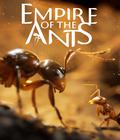



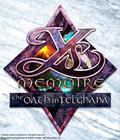
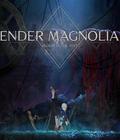
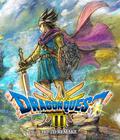


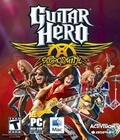 Fire up the fret board, crank the amp to 11 and get ready to rock this way with Guitar Hero: Aerosmith. Play through Aerosmith's career, bands they performed with, venues they played, as well as songs from celebrated artists that the band has either performed with or has been inspired by in some way.
Fire up the fret board, crank the amp to 11 and get ready to rock this way with Guitar Hero: Aerosmith. Play through Aerosmith's career, bands they performed with, venues they played, as well as songs from celebrated artists that the band has either performed with or has been inspired by in some way.






















